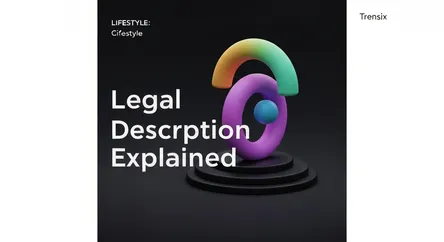Lifestyle
Legal Description Explained

Learn what a legal description is and why this precise method of identifying property is crucial for any real estate transaction. Avoid ownership disputes.
What is it?
A legal description is the formal, written identification of a property that is legally sufficient to be binding in a court of law. Unlike a simple street address, it uniquely defines the exact boundaries of a parcel of land using established surveying methods. Common systems include the Metes and Bounds system, which describes boundaries using distances and directions from a starting point, and the Lot and Block system, which references a recorded plat map of a subdivision. This description is the gold standard for defining property lines in deeds, mortgages, and other critical legal documents.
Why is it trending?
In a dynamic real estate market, precision is paramount. As property values fluctuate and development increases, so does the risk of costly disputes over boundaries and ownership. Legal descriptions are trending as buyers and investors become more focused on due diligence. The digitization of land records and the growing use of Geographic Information Systems (GIS) also rely heavily on these precise descriptions to map and manage property data accurately. This makes them increasingly relevant for everything from individual transactions to large-scale urban planning.
How does it affect people?
For any homeowner or buyer, the legal description is fundamental to their property rights. It is required to obtain a clear title, secure financing from a lender, and purchase title insurance. An accurate description prevents future boundary disputes with neighbors and ensures you are buying exactly the parcel of land you intend to. An error can jeopardize a sale, create a 'cloud' on the title, and lead to significant legal fees to correct, directly impacting a person's most valuable financial asset.